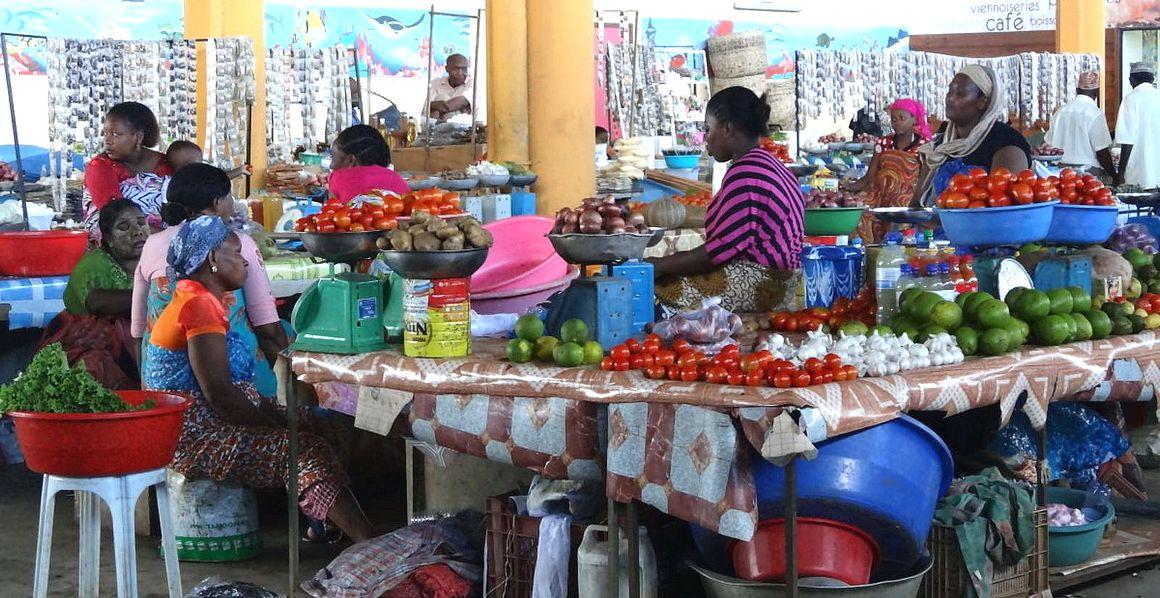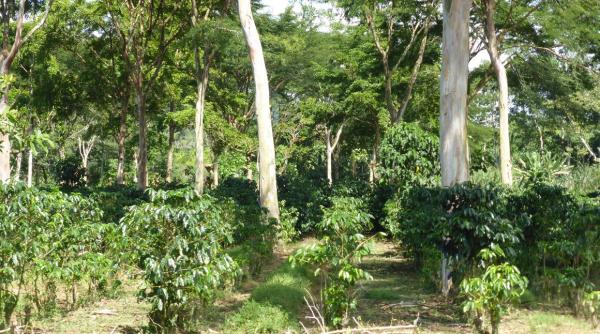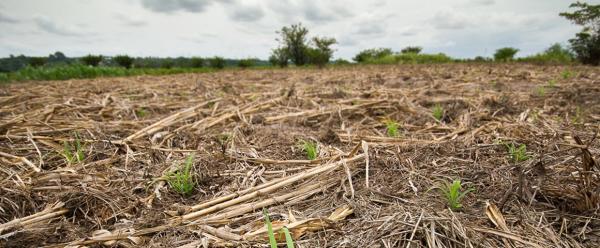Call to action 16 April 2025
- Home
- Press area
- Press releases
- Small local businesses role in inclusive and sustainable food systems
In the cities of the global South, small local businesses play a key role in inclusive and sustainable food systems

Mamoudzou market, Mayotte © L. Balbérini, CIRAD
Today, over half the world’s population lives in urban areas. This trend is expected to continue, with the populations of cities in Africa, South East Asia and Latin America forecast to grow by about 25% by 2050. How will cities in the South adapt their food systems to the pressures associated with their burgeoning populations? How could their capacity for responsiveness be strengthened?
“There is enormous potential for creativity and innovation among the populations of cities in the South, as demonstrated by the resilience of their food systems during the pandemic”, says Paule Moustier, a specialist in food in cities at CIRAD and lead author of a scientific brief entitled Priorities for inclusive urban food system transformations in the global South presented on 6 July (ahead of the Science Days of the UN Food Systems Summit on 8 and 9 July 2021). “These qualities are often underestimated due to bias. It is assumed that the only way to transform urban food systems in the South is through the development of large-scale retailers and that so-called traditional systems are unproductive and immutable. The challenge for our brief was to propose a different framework for understanding, one that is closer to the realities on the ground. This change is necessary if we want to create public policies that are appropriate and effective.”
In fact, the supply of food in cities in low-income countries is mainly ensured by small-scale production and retail, which have proved effective in feeding cities cheaply. Far from being unorganized, this system is structured by a succession of complementary actors and spaces (producers, collectors, wholesalers, retailers as well as small transport, storage and processing companies). What is more, micro-, small- and medium-sized enterprises innovate to meet new consumer demand for quality, particularly in terms of safety and convenience. These businesses are generally presented in opposition to large-scale agribusinesses that are considered "modern" and efficient.
Therefore, the authors of the brief developed six types of urban food systems specific to cities in the South. From their characteristics, they draw five levers for action that could help strengthen the capacity of cities to adapt to their growing populations, emphasising in particular initiatives with moderate use of energy and capital.
Six types of urban food systems in the South
“Current classifications of food systems for low-income countries ignore the diversity and creativity that exist within food systems run by micro-, small and medium-sized businesses, including producer groups”, says Paule Moustier. “Hence our proposal for six new categories that are more inclusive but also more realistic, which should lead to specific support from public authorities.”
- Subsistence
This system concerns urban agriculture, including home gardens. This contributes, to varying degrees, to the food and nutritional security of poorer populations and encourages the recycling of food waste (compost…). Nevertheless, it can also have negative health impacts because of soil and water pollution and the use of untreated waste. - Short relational (perishable goods)
A chain made up of farmers and retailers sells on markets and on the streets. Agreements are often based on loyalty and made verbally. Products are accessible to all income groups. This system supplies the city with fresh, nutrient-dense, low-cost produce. It employs low-skilled people. However, controls on the quality of products are limited. - Long relational (non-perishable goods)
A chain of farmers, collectors, wholesalers and retailers ensure sales on markets and on the streets. As with the previous category, commitments are made verbally and the products are accessible to all income groups. In terms of impacts, this system provides employment for low-skilled populations but remains limited in terms of controls on product quality. It is a fairly competitive system, but with high margins for a small number of wholesalers who control storage and credit. - Value-oriented, SME-driven
This system involves a chain of farmer-entrepreneurs or producer groups, processors and retailers. Product quality control and labelling practices are in place. These products are accessible to middle- and high-income consumers. This model has the advantage of creating employment and added value for low-skilled populations. Products are of better quality, more expensive than in the so-called traditional channels, but less expensive than in supermarkets. - Supermarket-driven
Similar to the previous system, this one involves a chain of farmer-entrepreneurs or producer groups, processors and retailers. It incorporates quality control and product labelling. It employs dedicated wholesalers and is sometimes supplied through producer organizations. Relationships are formalized through written contracts. Products are of better quality but are more expensive and therefore only accessible to middle- and high-income consumers. This model has varying impacts in terms of the inclusion of poorer populations and can increase the availability of ultra-processed and unhealthy products. - Digital
Finally, this type of system groups together the different ways the five types of urban food systems outlined above use digital technologies. This includes some e-commerce food delivery companies, as well as partnerships with SMEs. Products are accessible to middle- and high-income consumers. This system is well adapted to health crises. It also improves traceability and confidence in products and encourages certification. On the other hand, products are more expensive, and digital initiatives tend to exclude consumers with limited access to the internet.
Pragmatic recommendations for inclusive food systems
- Collect precise and up-to-date data
Effective public policy requires reliable data on consumption, supply areas and food chains. For this, the authors recommend collaboration between geographers, economists, nutritionists and statisticians. - Support production and sales sites that favour poor populations
Faced with market pressure on land and water resources, urban agriculture is in danger of disappearing. Moreover, urban markets often suffer from overcrowding and poor sanitation. Therefore the authors recommend that access to land for the poorest people be safeguarded against private investment. At the same time, basic improvements must be made to urban food markets to improve hygiene conditions (shelter from the rain, access to water). Finally, spaces for mobile vendors should be protected, with a modest financial contribution from them, given their important role in providing employment and food for vulnerable populations. - Promote nutrient-dense foods among consumers
Recipes using locally sourced fruits, vegetables, pulses and nuts should be made available by means of various communication drives. Packaging and labelling of these nutrient-dense local foods should also be encouraged. - Provide, at a national level, infrastructure and services for micro-, small and medium-sized enterprises
This set of recommendations covers improvements to rural-urban transport and training in small-scale food processing technologies (for example, improvements to fish smoking in Senegal or mango drying developed by CIRAD). But it also includes the allocation of services, such as credit, training in good hygiene practices and marketing as well as the provision of urban spaces for farmers' markets (as seen in districts in Laos and India). Quality control as well as a range of sanctions must be put in place by public authorities, as a complement to private control. - Encourage multi-stakeholder coordination and governance
Finally, the authors call for the establishment of professional organizations and inclusive platforms to help stakeholders coordinate better. Local authorities are increasingly involved in food policies through various levers: waste management, urban agriculture, school canteens, development of markets, etc. Research can help multi-stakeholder platforms to function effectively, particularly by providing data on markets and land use.
“Meeting consumer demand in cities in the South represents not only an opportunity for agri-businesses, but also for the numerous local food microenterprises and SMEs, which are more inclusive and have a lower environmental impact”, Paule Moustier concludes. “Among the proposed levers for action, many help create jobs for the least educated among those living in cities, in particular women. The recommendations should of course be adapted to local contexts and objectives.”



























